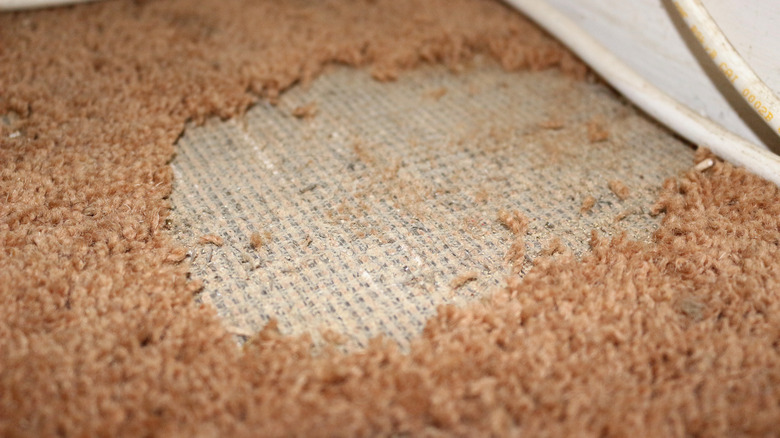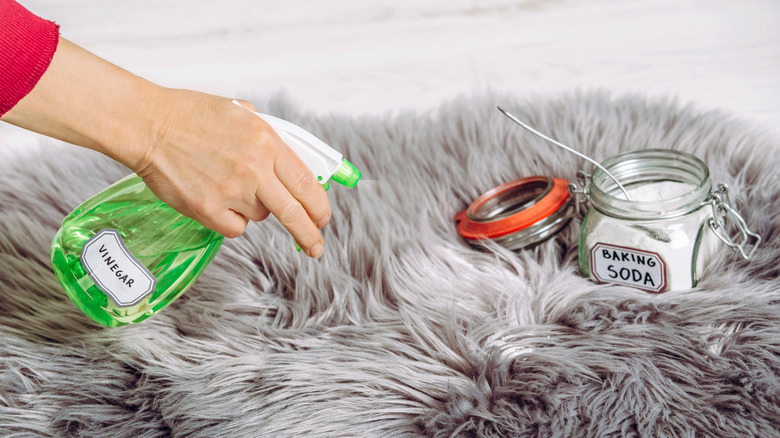Say Goodbye To Carpet Moths With Two Kitchen Ingredients
Few things are as chilling as the sight of moths rising from your carpet — that centerpiece that screams sophistication in your otherwise humble abode. These troublemakers are quite the unsung villains, like their cousins, the clothes moths, but with a particular fondness for a different territory. They prefer to keep it low, scuttling around the floor level while performing their carpet-destruction dance. So, how do you get rid of carpet moths, particularly without chemicals? Say hello to two kitchen pantry staples: white vinegar and baking soda. The acidic nature of white vinegar cripples the survival of carpet moth eggs and larvae, doing half of the extermination work. Baking soda steps up to aid in this quest with its antibacterial properties, further enhancing the potency of this moth-eradication concoction. Yet, it would be best to handle these warriors with care, as recklessness could worsen the damage you intend to resolve.
But what causes moths in carpets? In essence, carpet moth larvae, notorious for their voracious appetites, have a known affinity for keratin, the primary component of natural fibers (think cotton), hair, and skin debris. As carpets often store such keratin treasures, it's no surprise that they serve as a dining hall for these pesky invaders. Distinguishing signs of a carpet moth infestation isn't tricky. Look for defaced edges, thin areas, or holes, especially on carpets in lesser-used spaces. Sightings of adult moths aimlessly hopping around or larval cocoons glued to your carpet's edges are clear giveaways.
How to kill carpet moths with vinegar and baking soda
Step into the scene as a pest control pro with the proper supplies: white vinegar, baking soda, a soft brush, a spray bottle, and a vacuum cleaner. Next, conduct a patch test on the carpet with white vinegar. Some materials don't play nice with the acidity, hence the need for the reconnaissance mission. With the green light blinking, muscle up and move the furniture and items off the affected carpet. Your vacuum cleaner steps in next to remove any loose dirt and debris from the carpet. From there, liberally dust the carpet with baking soda; this is your first line of defense. Armed with your soft brush, work the powder into the carpet fibers, focusing more on the moth territories. Let it sit throughout the night.
When dawn breaks, vacuum again. Then, enter phase two. Concoct equal parts of white vinegar and water in your spray bottle, then shower the mixture over the affected carpet areas. Mind not the fizzling; it's the typical reaction between the two agents. Remember, too much vinegar solution can trigger mold issues due to longer drying periods. Also, keep the windows open to expedite drying and disperse the vinegary scent. In around 30 minutes, sweep away the vanquished foes. And if the carpet appears soaked or dirty afterward? Rinsing with water should do the trick. Habitual vacuuming the carpet, complemented by regular sunbathing, can help prevent future onslaught of moths.

